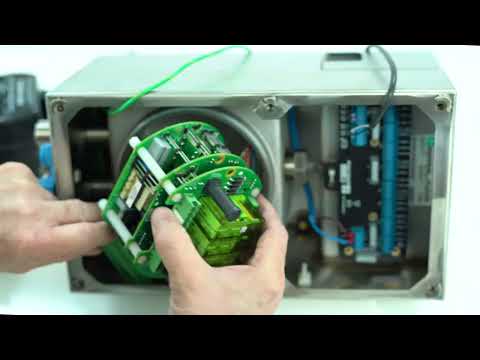
The F31K2 sensor is part of Pepperl+Fuchs’ open solutions concept for valve position feedback. It is based on simple designs that can be used in a wide variety of applications, even in the harsh and corrosive environment found at Dutch company Frisia Zout.
Salt is everywhere at Frisia Zout. “Zout” is Dutch for salt, and since that is precisely what Frisia produces it is hardly surprising that the company’s tanks and pipes are filled with it. However, salt is also in the air, as the company’s plant in the Dutch city of Harlingen is located only a few meters away from the sea.
Salt causes exposed metal parts to corrode. Together with condensed water, this poses a significant problem for the switch boxes that control the company’s outdoor valves. All too often, they have to be replaced due to corroded contacts and electrical parts, which is why Frisia Zout was eager to implement Pepperl+Fuchs’ F31K2 dual inductive sensor for valve position feedback. The results seen during the six-month test phase were excellent, and the company plans to replace all of its switch boxes with the F31K2 sensors.
Corrosive conditions
3,000 meters below Harlingen lies the salt formation where Frisia Zout sources its raw material. Water is forced into the mineral formation at high pressure and salt-saturated brine is pumped up into the plant’s huge tanks. Here, soda and lime react with the brine, separating the impurities from the brine resulting in lime-like residual matter, which itself is a useful byproduct used in the construction industry and in fertilizers.
“We fitted two valve position sensors to the supply pipes about six months ago and two more to the drain pipes shortly afterwards,” recalls Rudolf Bergsma, the head of the plant’s electrotechnical division.
Bergsma recognized the opportunity to solve a recurring problem that he was facing with the switch boxes mounted on the plant’s pneumatic valve actuators. These switch boxes are housed in aluminum boxes and use contacts that move mechanically. However, they are not ideal for use in the climate of the North Sea which, combined with the boxes’ susceptibility to internal condensation, means that they constantly corrode inside and must be replaced frequently.
Box within a box
“A lot of our equipment is made of polyester or stainless steel to ensure that it can withstand salt-induced corrosion,” says Rudolf Bergsma. “When I saw the F31K2 sensor’s plastic cover and read about its double-housing design, I realized that this could be just what we were looking for.” Bergsma then contacted the Dutch valve supplier Bray Controls and Pepperl+Fuchs, which is headquartered in the German city of Mannheim, to organize on-site testing.
“The sensor has a number of advantages which impressed us immediately,” says Jos De Jong from Bray Controls. “It is compact and gives a very clear indication of the valve’s position. With the inductive sensors, there is no need for mechanical contacts – what is not there cannot corrode! For additional protection, the switches are fully encapsulated in a box within a box. At a very reasonable price, the sensor looked like the perfect solution.”
Touch-free position detection
Traditional switch boxes are based on mechanical feedback systems that depend on rotary or lifting movements, e.g., conventional actuating switching elements that work via switching cams. In contrast, the F31K2 valve position sensor separates mechanical movement and position feedback by using two inductive elements. As soon as a metallic surface (target) enters the inductive sensor’s magnetic field, it is detected by the evaluation electronics and the output is triggered. Simple metal targets are sufficient for valve actuators, whose positions can be detected touch-free with the inductive sensors. Since no physical contact is necessary, the sensor can be hermetically sealed from the actuator.
“The electronic solution combines a high degree of switching measurement accuracy and precisely defined hysteresis with intrinsic ruggedness,” states Pepperl+Fuchs sales engineer Wim Kamman. “To ensure that the sensor can connect seamlessly with existing control systems, options featuring all common connection types and interfaces are available. The beacon is visible from a long distance and gives on-site operators reliable information at a glance.”
Open solutions
背后的基本操作概念F31K2感官r is an actuator (puck) that contains the targets and a dual sensor. These can be installed without mounting brackets thanks to the mechanical standardization of drives pursuant to VDI/VDE 3845 and NAMUR mounting holes. The dual sensor is directly attached to the drive housing, and the puck merely needs to be pushed onto the drive shaft and fixed in place according to the valve’s current position.
>> For more information on this product, clickhere
Companies in this article



































